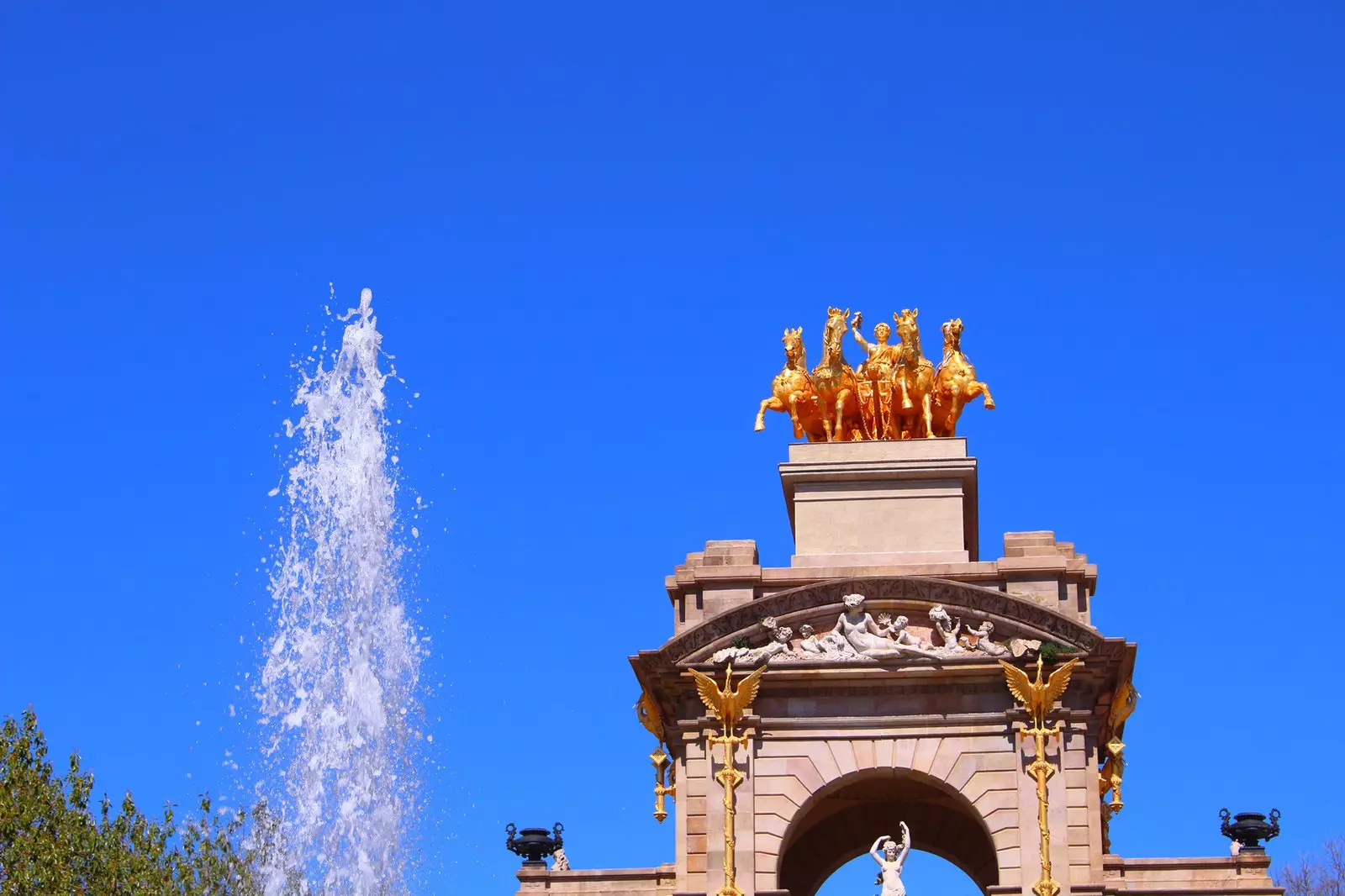
Heroes, nymphs and divinities inhabit Barcelona
All the cities that have a long history behind them have tried to find their origins in legends, and ** Barcelona ** could not be left out of this group of places with mythological provenance.
In fact, There are two founding legends that have to do with the city. The first, gives it a Carthaginian origin, being Amílcar Barca, father of Hannibal himself, who founded it back in 230 BC. c.
However, the second version has another root, according to Greek mythology: the brothers Heracles (Hercules for the Romans) and Hermes began a long journey accompanying Jason and the Argonauts crossing the Mediterranean, in his search for the Golden Fleece. An expedition made up of nine boats, one of which was lost along the way due to a tremendous storm.
Jason, then, commissioned Heracles to go look for that ninth ship and found it next to Montjuïc.
The story goes that the crew liked the place so much that, with the help of Heracles and Hermes, they founded a city with the name of 'Barcanona' and that with the passing of time it would be renamed Barcelona.
Mythology and legends continue to inhabit Barcelona and its streets are a constant encounter with heroes, gods, nymphs and fantastic animals.
We walk through the most legendary Barcelona in search of these protective beings who one day came to stay.
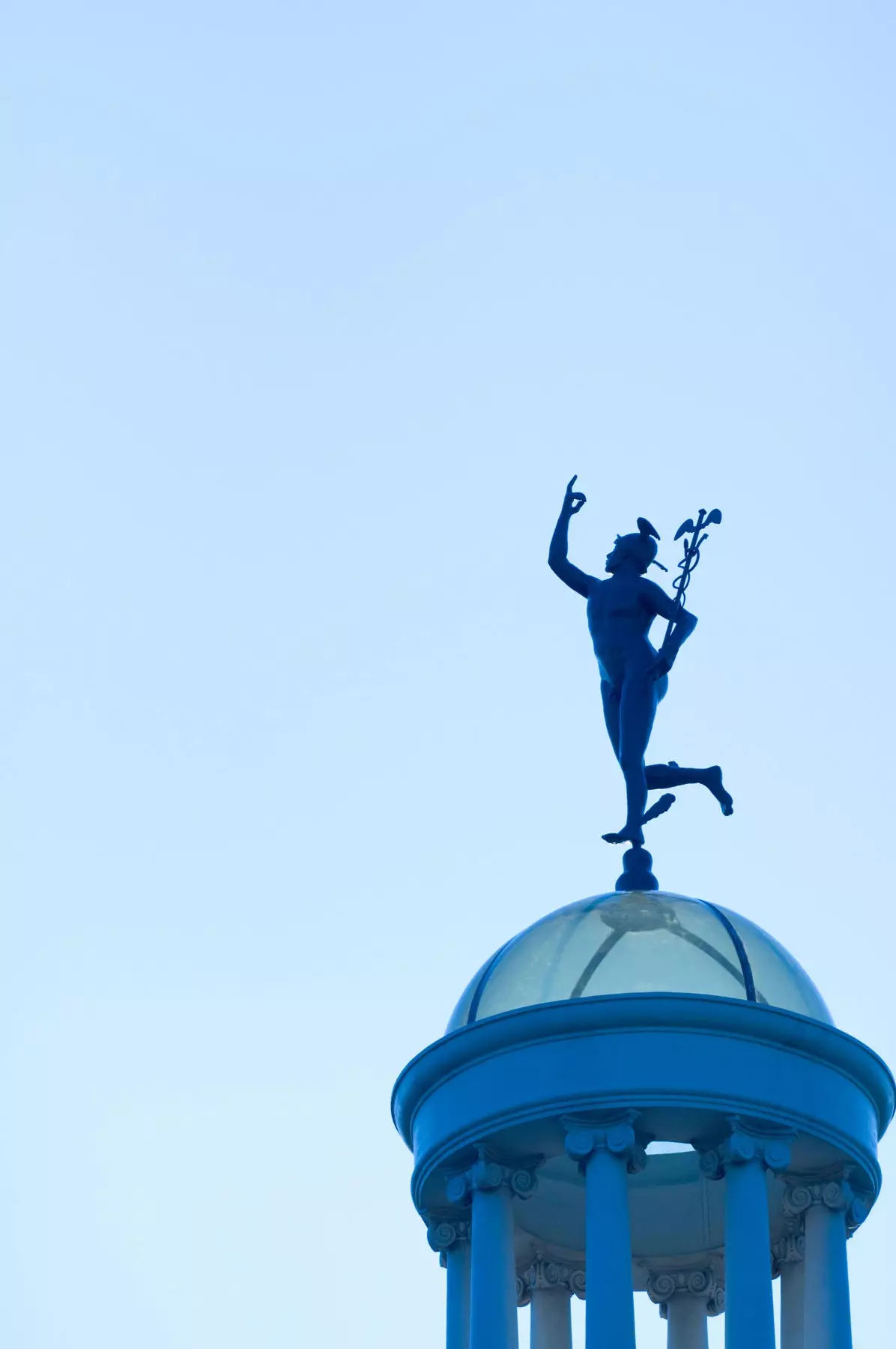
Hermes sculpture in Plaça Catalunya
HUNTING HERMES
According to Greek mythology, Hermes is the messenger of the gods and god of commerce and finance. In addition to inventor, inspirer of art, promoter of cosmogonic sciences, protector and god of travellers, thieves and liars.
As the god of commerce, his image is depicted on a large number of buildings, such as bourgeois houses, banks or factories. In fact, he is one of the gods that has more representations all over the world.
The co-founder of the city is omnipresent in Barcelona. And, although the myth tells that Hermes and Heracles founded the city, no other god is as present in its streets as this winged deity.
Recognizing Hermes is easy, since he has three very identifying elements. A winged helmet , the caduceus given to him by his brother Apollo in exchange for a seven-stringed lyre made from the shell of a tortoise, and finally, talarias or winged shoes They give you speed on the move.
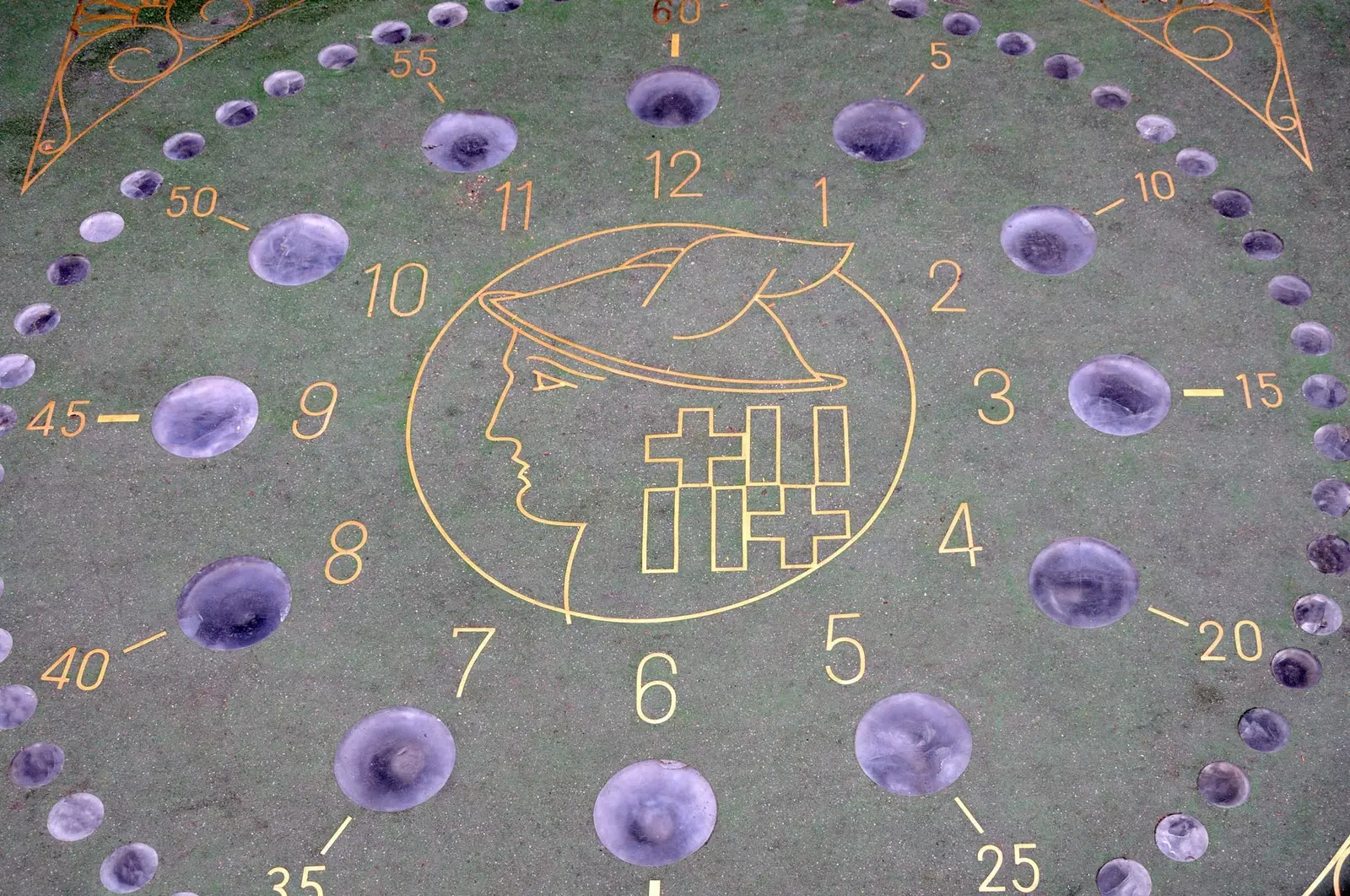
Luminous clock of Via Laietana
In Barcelona there are thousands of images of Hermes, especially in Ciutat Vella and Eixample , due to the number of houses belonging to the bourgeoisie.
And, for years, the Barcelona of Hermes has been explored and discovered by the members of ** Caçadors d'Hermes **, a cultural association made up of ten bloggers who search for figures of this divinity throughout the city.
Through routes, conferences, photographic exhibitions, cultural activities and even a book _( La Barcelona d'Hermes _) , they make known a different vision of the city related, always, to this god.
Some of the representations of the winged god are clearly visible, although, as is often the case, most people do not notice them.
This is the case of the figure that forms part of the allegory of Barcelona, the work of Frederic Mares What is there in the Plaça de Catalunya, or the one that appears in the luminous clock of one of the sidewalks of Via Laietana.
There are also many other more hidden or elevated Hermes, like the one in one of the friezes of the arc de triomf , which was used as the entrance gate to the 1888 Universal Exhibition site, or the one found in the frontispiece of the building of the Port Works Board , current headquarters of the Port Authority, in Plaza del Portal de la Pau, number 6.
The building of Barcelona's town hall , in Plaça de Sant Jaume, has the caduceus of Hermes represented on the façade. And one of the most beautiful images of Hermes, that of the Veronica Square , has suffered its own history of vandalism, as it has been a regular target of graffiti.
In 2003, he himself banksy Unlike his aesthetic murals, he filled the sculpture with fluorescent sprays. Who also wanted to honor the messenger of the gods was Antoni Gaudí , who designed six lampposts with a winged helmet, two of which are located in Plaça Reial.
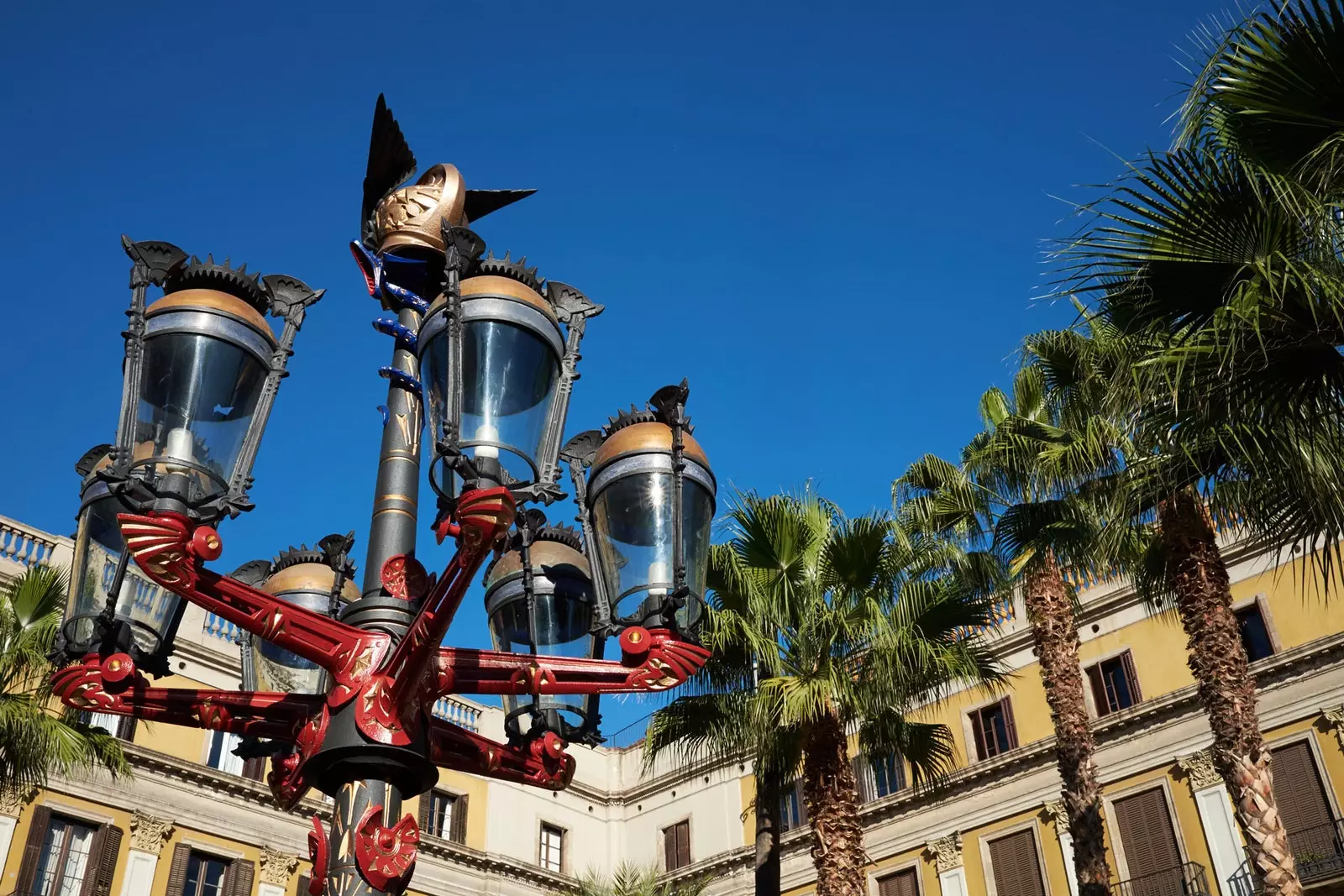
Lamppost with a winged helmet, the work of Gaudí, in Plaça Reial
A WALK BETWEEN GODS AND NYMPHS
The Parque del Laberint d'Horta is one of the most fascinating places in Barcelona. It is the oldest in the city, located at the foot of Collserola and away from the hordes of tourists.
It is a mysterious and magical park formed by a neoclassical garden, another romantic and a striking labyrinth of cypresses. All of them inhabited by statues with mythological allegories that transport us to another world.
Getting lost in the four levels of the maze is easy and finding the way out is not so easy. but it also means discovering a set of fountains where the murmur of running water brings an even more heavenly sound to this serene garden.
On the lower terrace waits the god Eros, mythological representative of love, and in the grotto of the exit from it is one of the most surprising images, dedicated to the unfortunate myth of the young Narcissus and the nymph Echo , allegory of the search for love and its fragility once found.
This same terrace houses a marble relief with Ariadne and Theseus.
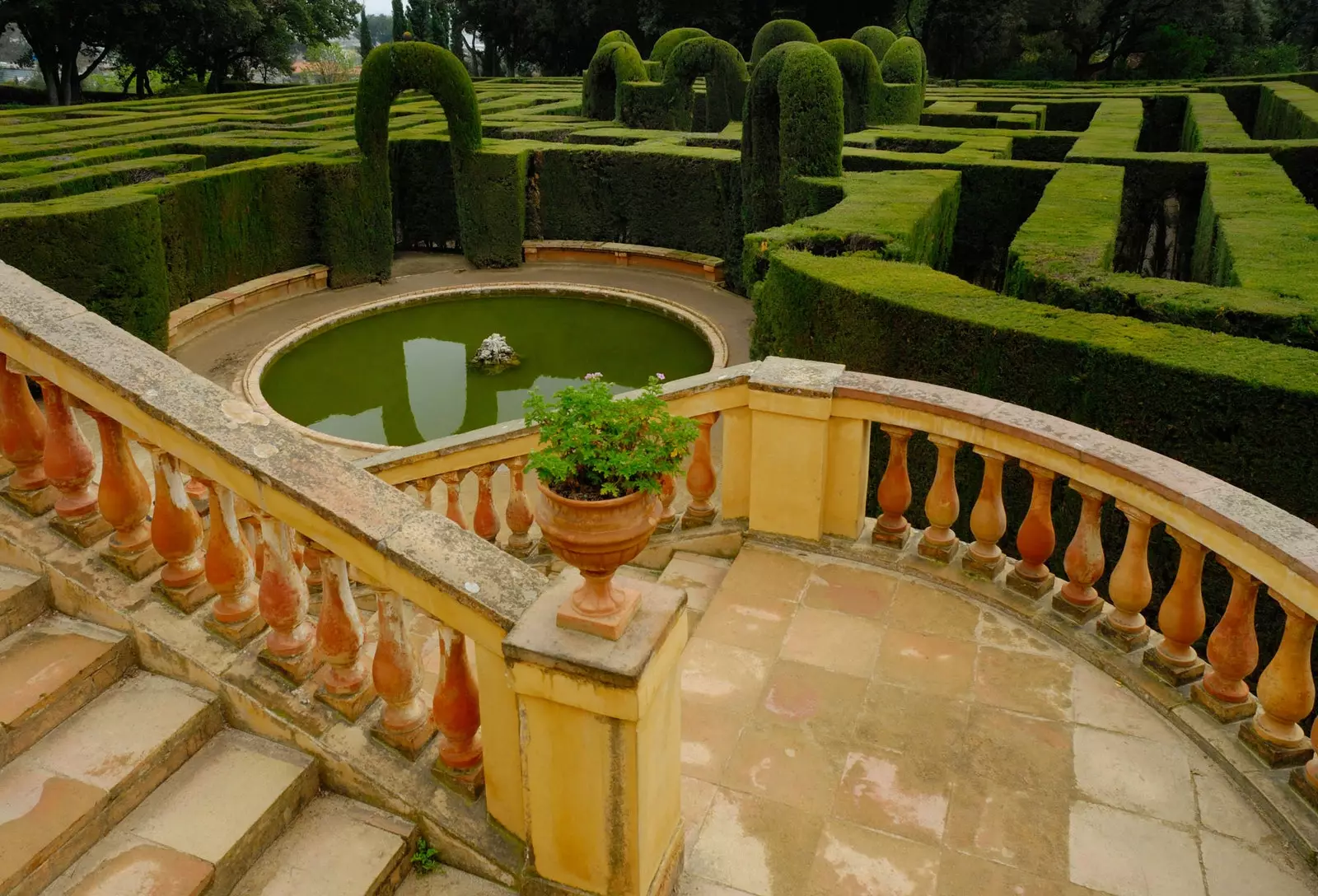
The romantic and mysterious Laberint d'Horta
From the intermediate terrace , above the labyrinth, you can see its ins and outs, where, by the way, a scene from Tom Tykwer's film Perfume was shot.
Right there, two Italian-style temples with Tuscan columns and two statues dedicated to Danae and Artemis , Greek symbols of fertility and nature.
Beside the grand staircase leading to the third level is a bust of Dionysus, god of wine and exuberance. The upper part of the garden houses a large terrace with views of the city and the sea.
Over there, a large pond is presided over by Egeria , a nymph who in Roman mythology lived in a spring and who was so saddened by the loss of her beloved that she cried until she ended up becoming a fountain herself.
In front of this pond is the Pavilion of the Nine Muses , crowned by a sculpture representing art and nature.
Finally, one descends towards the allegory of death itself , represented by a winding path that, on the north side of the gardens, ends in a false medieval cemetery.
With its mixture of romantic and neoclassical styles, the Laberint d'Horta is an experience where water, nature and silence become metaphors for love and death.
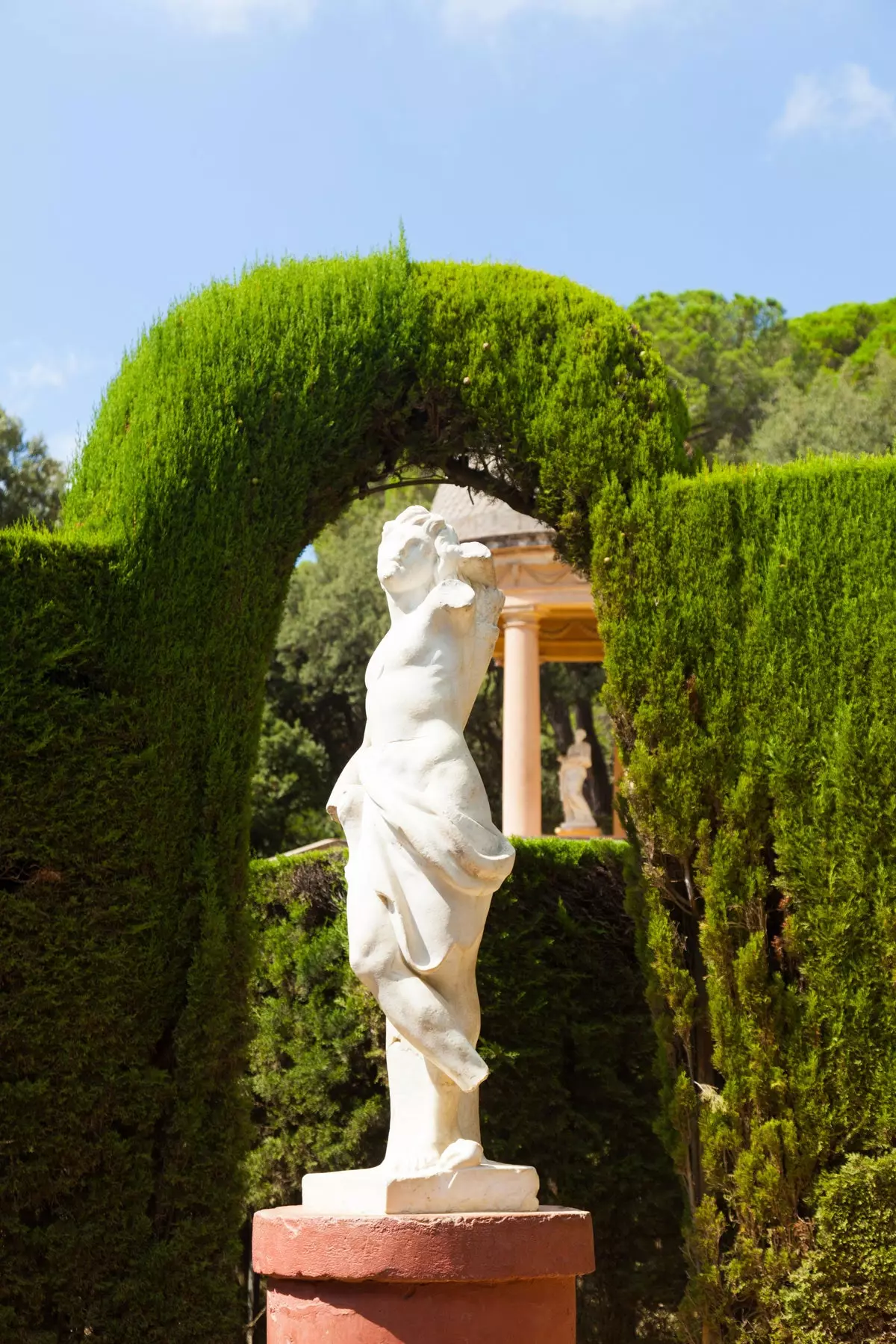
Sculpture of Eros in the Laberint d'Horta
WALKING THROUGH OLYMPUS IN BARCELONA
Many other inhabitants of the mythological world have stayed to live in Barcelona. In the case of ornamental fountains, the oldest in the city is located at the crossroads between Passeig de Sant Joan and Carrer de Córsega, in the Gràcia district, and its protagonist is Hercules . Although he has not always been in this place.
As expected, Hermes is not the only representative of Olympus in the squares, parks and streets of Barcelona.
In Montjuïc, is the source of Ceres. For its part, Neptune it governs the waters from a fountain in the Plaça de la Mercè, from the Lonja de Mar and in the heritage complex of the Parc de la Ciutadella.
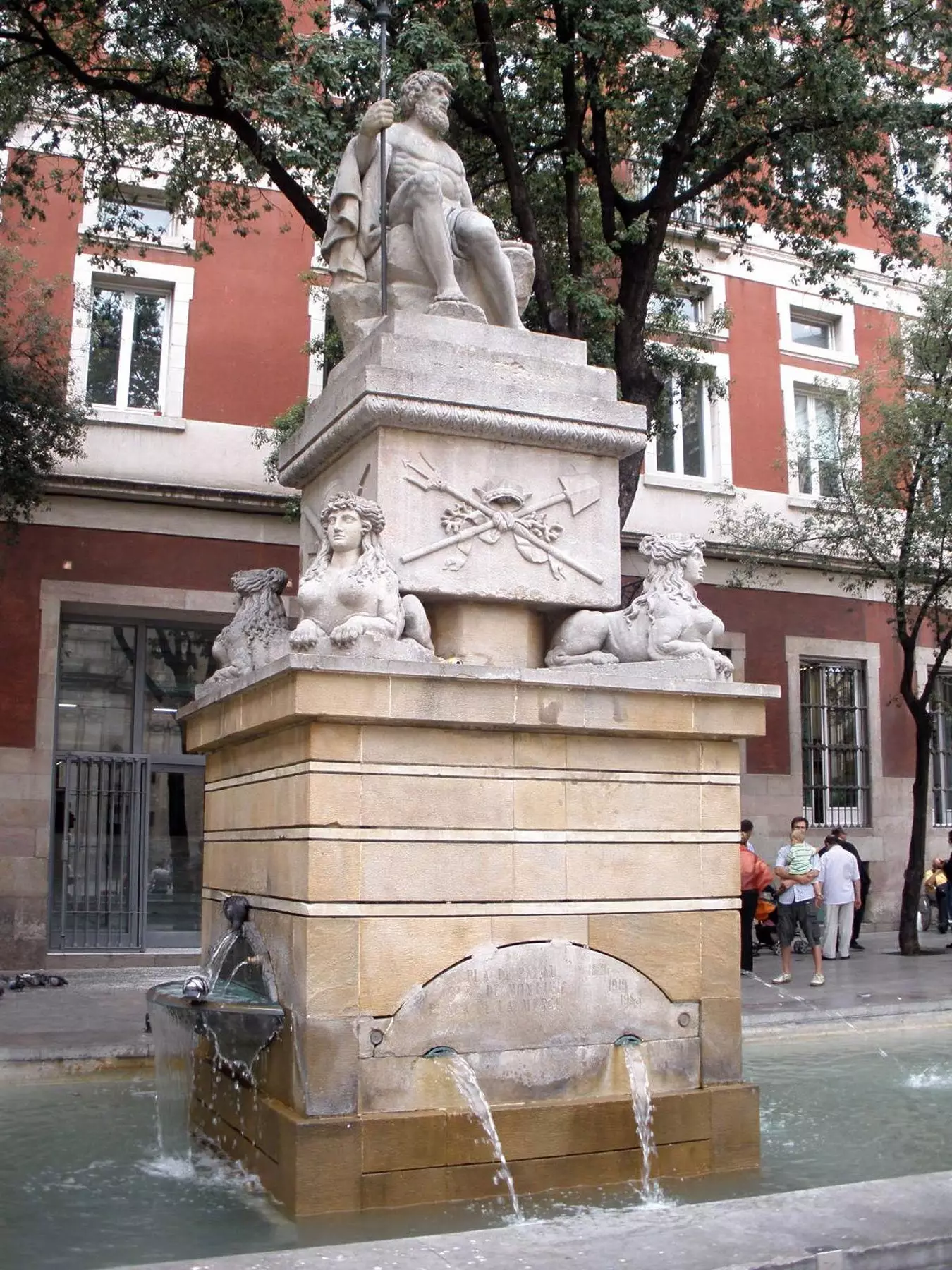
Neptune Fountain, in Plaça de la Mercè
Precisely this park has a unique set: the Ciutadella Waterfall. A true aquatic display of fantasy where mythology and water keep each other company.
Observing this colossal panegyric to beauty, we can discover that at the epicenter of the waterfall, some sculptures represent the birth of venus
A superb golden sculpture shines in the heights, it is Aurora's chariot that crowns with her four horses this fountain designed, more than a century ago, by Josep Fontseré.
Finally, the waters have the presence of four griffins, mythological creatures, half lion and half eagle, that, as guardians, they expel water through their mouths in their eagerness to protect that corner of the city destined to be inhabited by the gods and that, As has always happened with everything divine, we mere mortals can only aspire to observe from the outside.
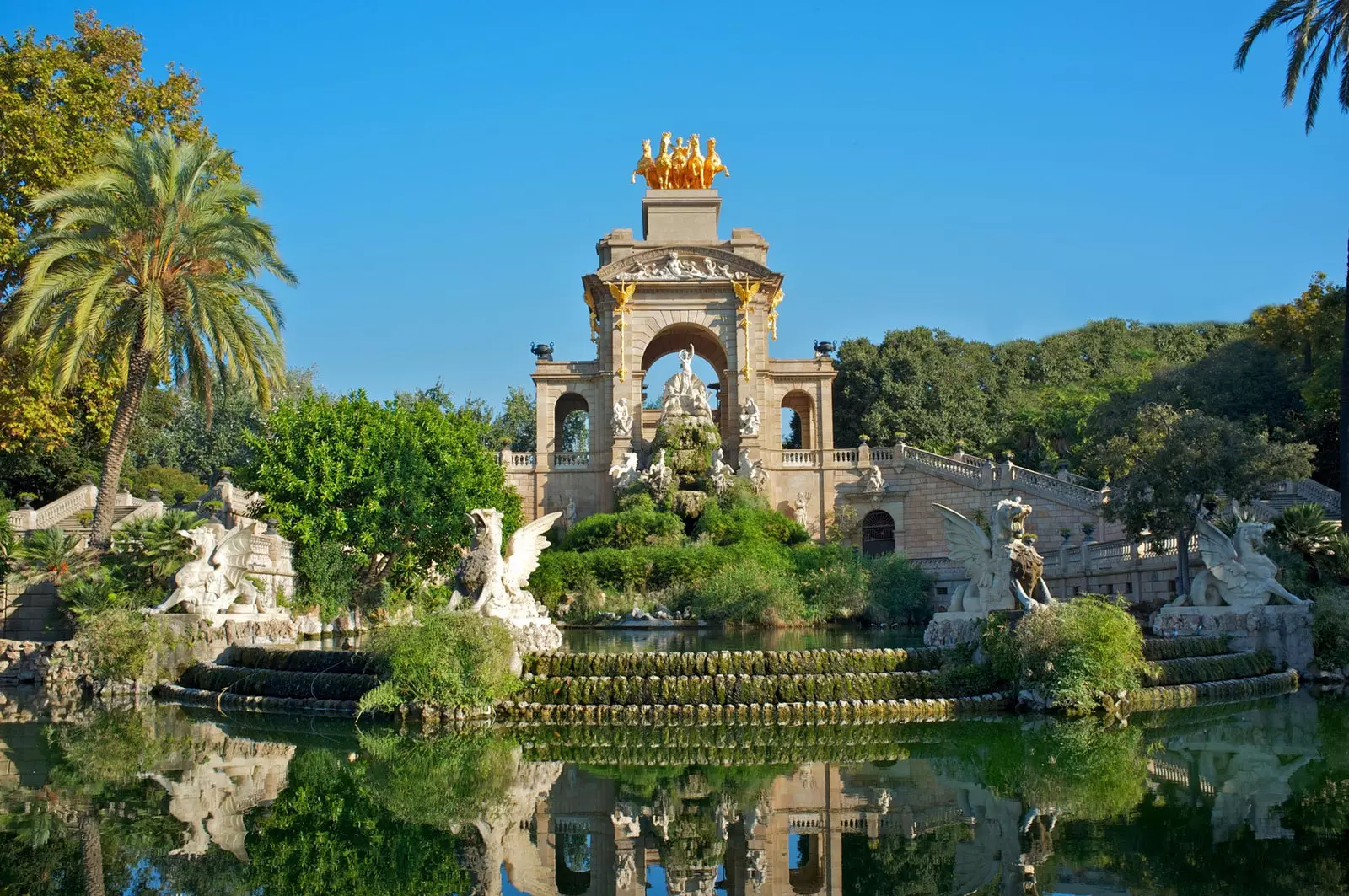
Ciutadella Park Waterfall
